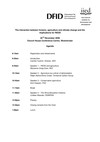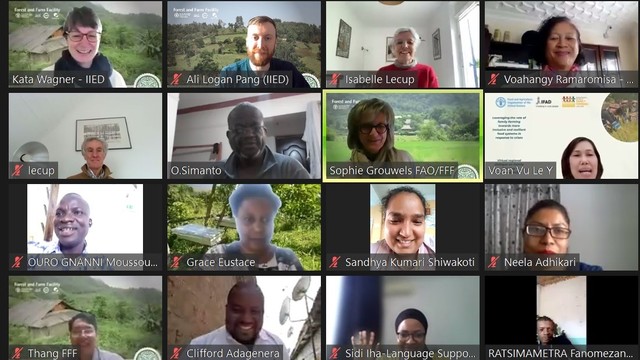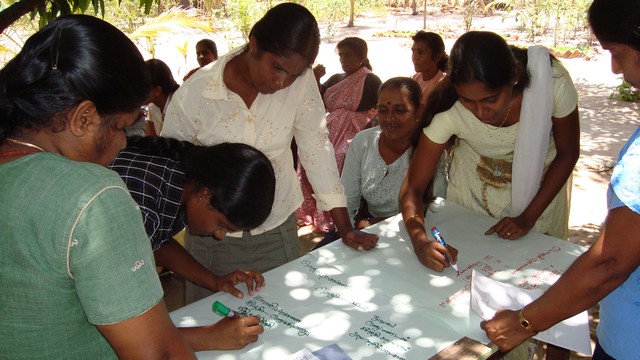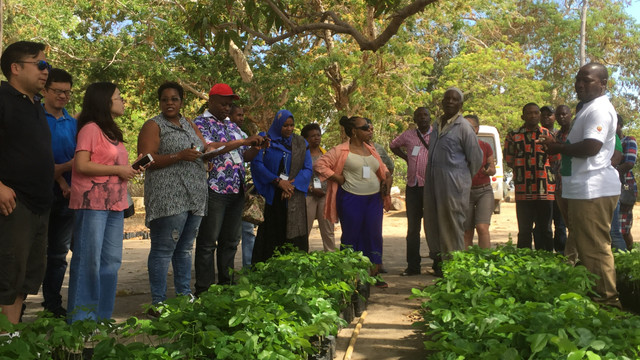The interface between forests, agriculture and climate change: understanding the implications for REDD
This work sought to increase understanding of the interaction between forestry, agriculture and climate change. It mapped the implications for strategies and approaches to Reductions in Emissions from Deforestation and Degradation (REDD).
Forestry, agriculture and climate change are closely linked, posing challenges for the coordination of development, adaptation and mitigation policies. Land-use change in the form of deforestation and forest degradation is a major source of greenhouse gas (GHG) emissions.
Agriculture is at the heart of most low-income economies, and it provides livelihoods for the majority of the poor. But it is an important driver of deforestation so contributes indirectly to GHG emissions. It is also a large source of GHG emissions through the use of fertilisers, animal manure, and methane emissions from livestock and rice cultivation.
Climate change will have impacts on both forests and agriculture. In particular it will cut agricultural yields in dry and tropical regions, putting further pressure on remaining forests if farmers respond by extending cultivated areas.
There is now momentum behind REDD as a climate change mitigation choice and broad support for including it in the Post-Kyoto framework. Many countries are in the process of developing national REDD strategies. Inclusion of emissions from agriculture in the international framework has met more resistance mainly because of concerns about the scientific underpinning and the practicality of measurement.
A number of practical and technical barriers to REDD have been identified and some are specifically related to agriculture. Concerns which may undermine any mitigation or development benefits of REDD include:
- Weak forest governance
- Insecure or poorly defined land tenure, and
- The economic pressures of demand for timber and agricultural production in increasingly integrated world markets.
Limits on deforestation in one country may lead to pressure on forests in other countries, negating any mitigation effects. If this leakage is prevented, the result may be an increase in prices of food products. This would then conflict with national and international development goals to decrease poverty and improve food security.
Much depends on how and to what extent the productivity of agricultural land can be increased given REDD restrictions and the impacts of climate change itself. However, some of the most obvious measures for increasing agricultural productivity, increasing fertiliser use and irrigation, need greater use of energy or involve nitrogen use. This has consequent implications for greenhouse gas emissions. A focus on REDD alone may lead to these intersectoral leakage effects being missed.
Regardless of whether agriculture is included in the Post-Kyoto framework, the effectiveness of REDD for both mitigation and development is closely linked with what happens in the agricultural sector. REDD policies and strategies at both international and national levels may therefore need to look beyond the forestry sector and give attention to agriculture.
- See our related work on the economics of agriculture and cllimate change.
- See our related work on REDD in Vietnam.
What IIED did
The intiative aimed to increase understanding of the interaction between forestry, agriculture and climate change and to map out the implications for strategies and approaches to REDD.
A key objective was to ensure that the effectiveness of REDD strategies in terms of mitigation and development wasn't undermined by lack of attention to agriculture, and to promote mutually-reinforcing strategies for REDD and agricultural development, adaptation and mitigation.
A workshop was held in Westminster on 20 November 2009 to explore the the interface between forests, agriculture and climate change and its implications for REDD.
Publications
Additional resources
Beyond forestry: why agriculture is key to the success of REDD+, Maryanne Grieg-Gran (2010), IIED
Partners
Terrestrial Carbon Group




